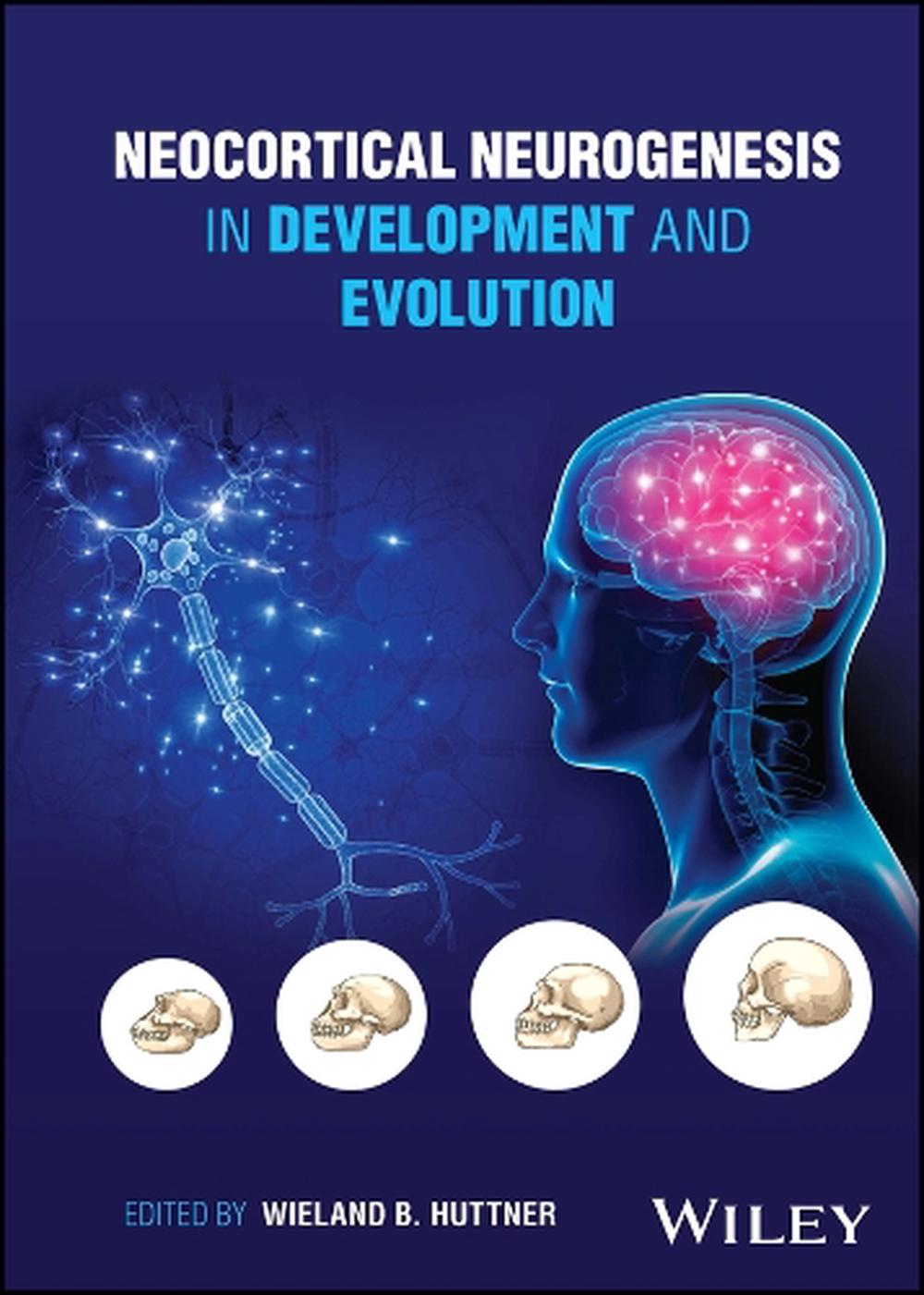
Neocortical Neurogenesis in Development and Evolution
by Wieland B. Huttner
NEOCORTICAL NEUROGENESIS IN DEVELOPMENT AND EVOLUTION Understanding the development and evolution of the mammalian neocortex The development of the mammalian brain, including the human brain, is inextricably linked with its evolution. Of particular interest is the development of the neocortex, the youngest part of the cerebral cortex in evolutionary terms and the seat of such vital functions as sensory perception, generation of motor commands, and higher-order cognition. The process of neurogenesis is crucial to the formation and function of the neocortex, but this process is complex, based on species-specific adaptations of old and acquired new traits that subserve specific functions introduced during mammalian evolution. Neocortical Neurogenesis in Development and Evolution provides a groundbreaking and comprehensive overview of neurogenesis in the developing neocortex and its evolutionary implications. It covers the generation of neurons and their migration to their functional positions, neural patterning, cortical folding, and variations and malformations of cortical development. Readers will find: A comprehensive review of the evolution and development of the neocortex in mammals — the part of our brain involved in the higher cognitive functionsA multitude of subject disciplines ranging from neuroscience, molecular biology, genetics, developmental biology, evolutionary biology and medicine to provide a holistic understanding of the evolutionary youngest part of the cerebral cortexCoverage of neurogenesis in the developing neocortex and how this contributes to our understanding of the evolutionary implications Neocortical Neurogenesis in Development and Evolution is essential for researchers and postgraduates in neuroscience, developmental biology, evolutionary biology, and medical research.
Hardcover
Brand New
Author Biography
Wieland B. Huttner, MD, is a Founding Director of the Max Planck Institute of Molecular Cell Biology and Genetics and Honorary Professor at the Technische Universität Dresden, Germany. He has been Chair of Neurobiology of Heidelberg University, Research Group Leader at the European Molecular Biology Laboratory (EMBL) in Heidelberg, and has published key contributions on the cell biology of brain development and its evolutionary implications.
Table of Contents
Cortical Progenitors and Germinal Zones 1 Neural stem cells as glia. 2 Diversity and evolution of human cortical progenitor cell types. 3 Intermediate progenitors in neocortical development and evolution. 4 Area V1 development, a model system to link corticogenesis to adult cortex structure and function? 5 Neocortical neurogenesis in amniote evolution. 6 Dynamic transcriptional control of neural stem cells. 7 Mechanical and physical interactions involving neocortical progenitor cells. 8 The role of human-specific genes and amino acid substitutions for neocortex expansion and modern human vs. Neanderthal differences in neocortical neurogenesis. Progenitor Lineages 9 Temporal scaling: a link between conserved neurogenic processes and differential size in mammalian cortical development. 10 Interplay of cell-autonomous gene function and tissue-wide mechanisms regulating radial glial progenitor lineage progression. Generation of Neuron Types 11 Generation of projection neuron diversity in the neocortex: from embryos to organoids. 12 Development of cortical neuron heterogeneity and impact of neurodevelopmental disorders. 13 Developmental and evolutionary origins of cortical projection neuron identity and connectivity. 14 Intrinsic and input-dependent development of cortical neuron types. 15 Corpus callosum evolution and development. 16 Towards the transcriptionally-based classification of L6b in the adult mouse brain. Neuron Migration 17 Cortical neuron migration in health and disease. 18 The emerging roles of LIS1 biomechanics in cellular and cortical homeostasis. Neural Patterning, Specification of Cortical Regions 19 Understanding human forebrain morphogenesis and early expansion using organoids. 20 Early neuronal differentiation/patterning of the human pallium, modeling by in vitro systems, and disruption in developmental disorders. 21 Mammalian cortical regional specification. 22 Development of the neocortical area map. Cortical Folding 23 Old models know wrinkles best -- A critical review on the mechanisms of cortical gyrification 24 Investigation of the mechanisms underlying the development and evolution of the cerebral cortex using gyrencephalic ferrets. Cortical Development: Variations, Disorders and Malformations 25 Genetic variation altering cortical progenitor function leads to human brain evolution and interindividual differences in human brain structure. 26 Human neocortical evolution and neurological disorders 27 Clinical and molecular overview of cortical malformations. Overarching Topics 28 Post-transcriptional control of brain development. 29 Regulation of mRNA localization and translation in brain development: Implications for the mechanism leading to the brain evolution and pathogenesis. 30 The roles of signal transduction during cortical neurogenesis. 31 Centrosome regulation and function in the developing neocortex. 32 Keeping the cortex afloat: Cerebrospinal fluid contributions to cerebral cortical development. 33 Comparative cognitive neuroscience and dorsal and ventral streams in primates.
Details

